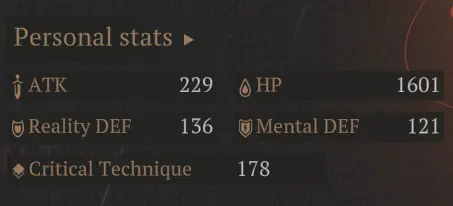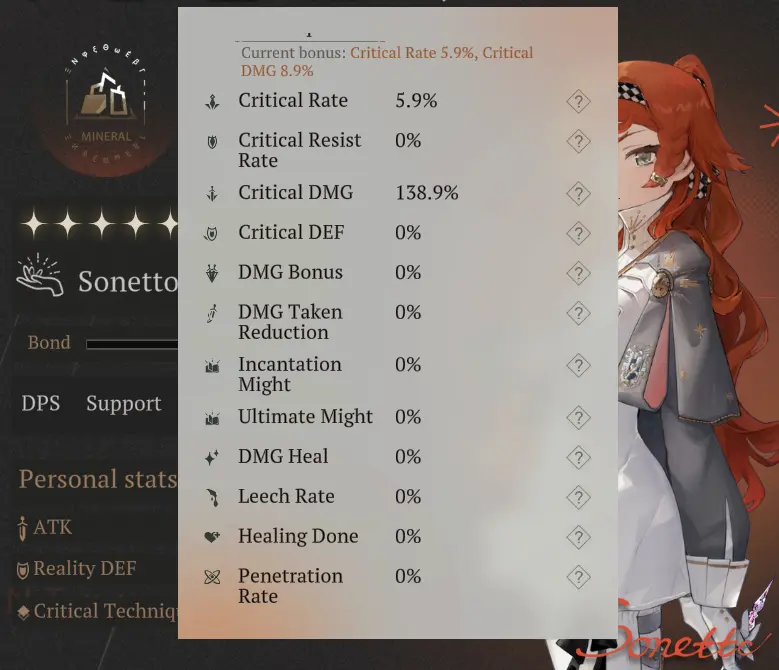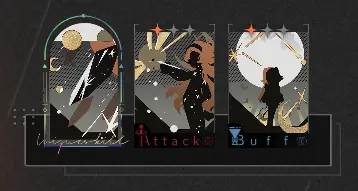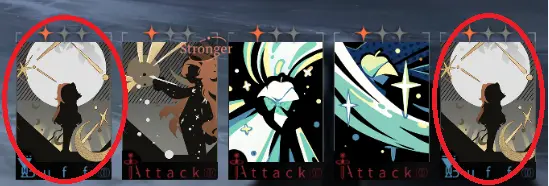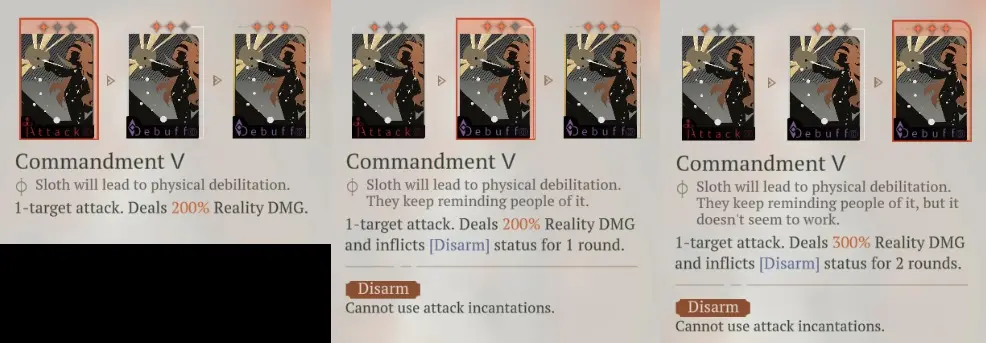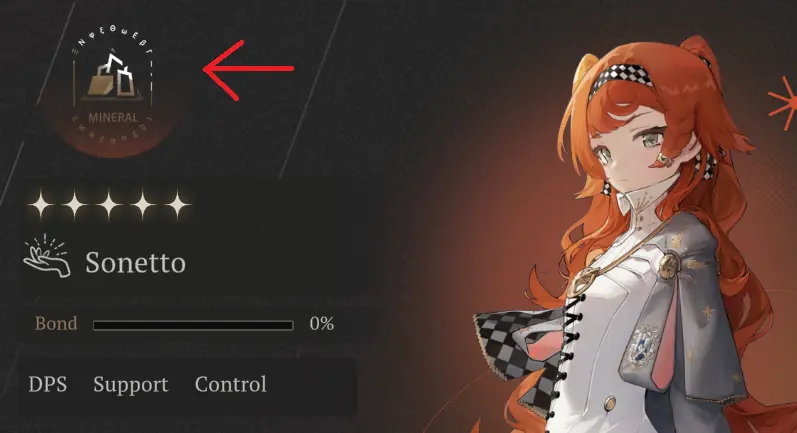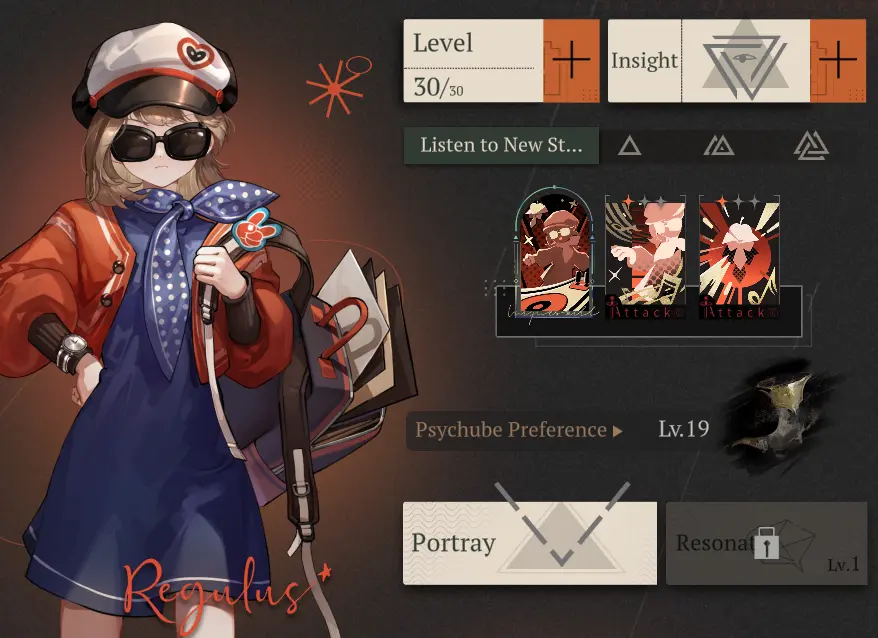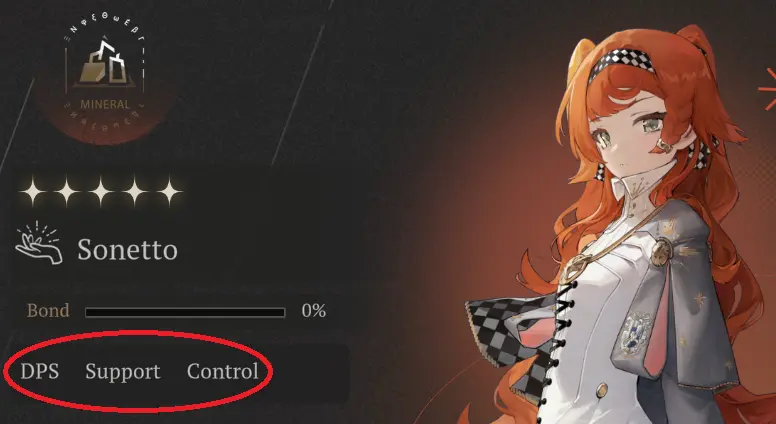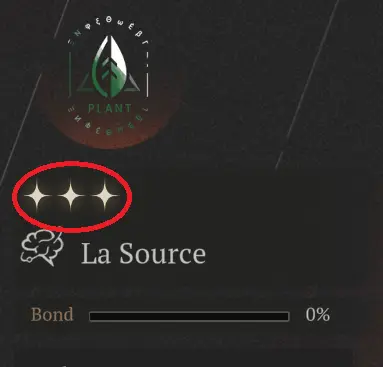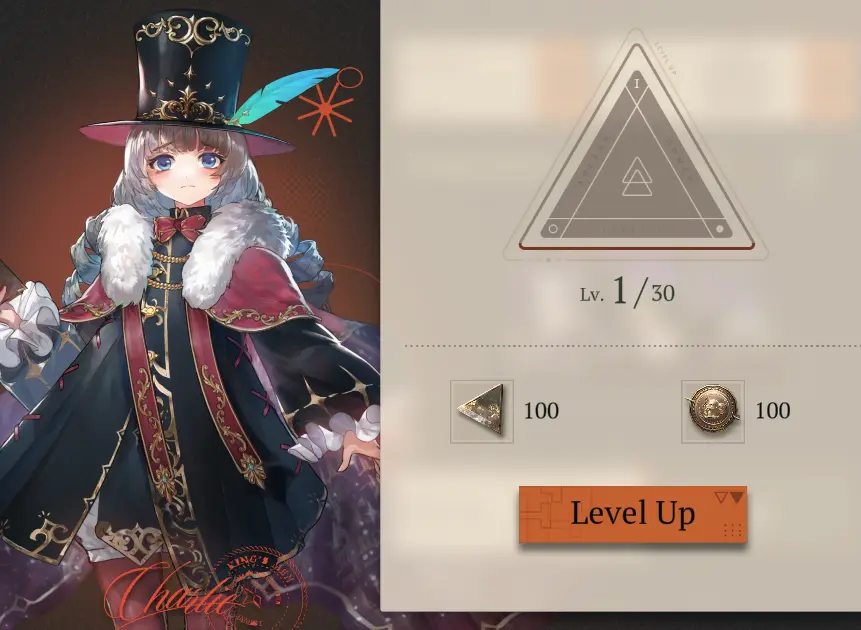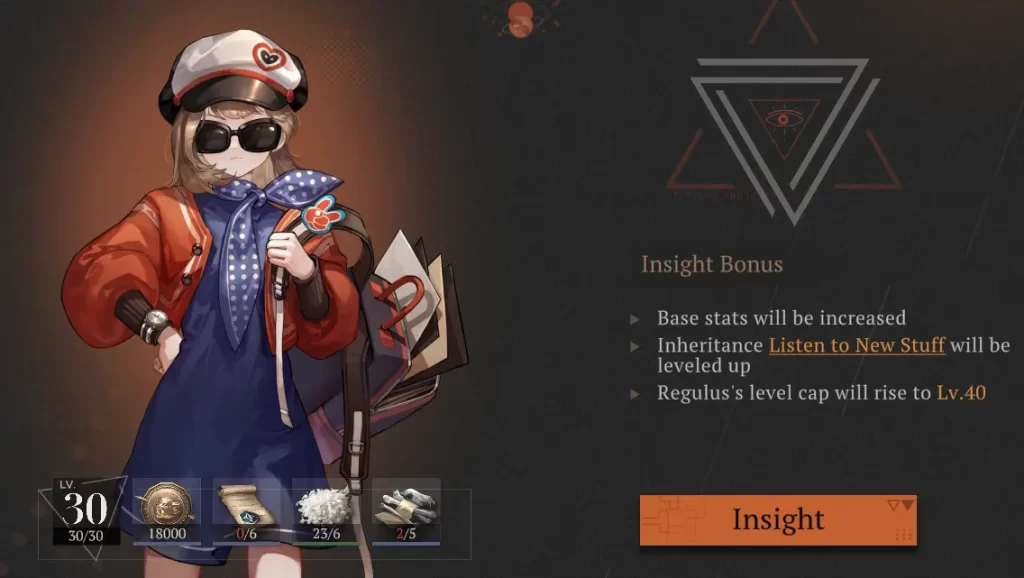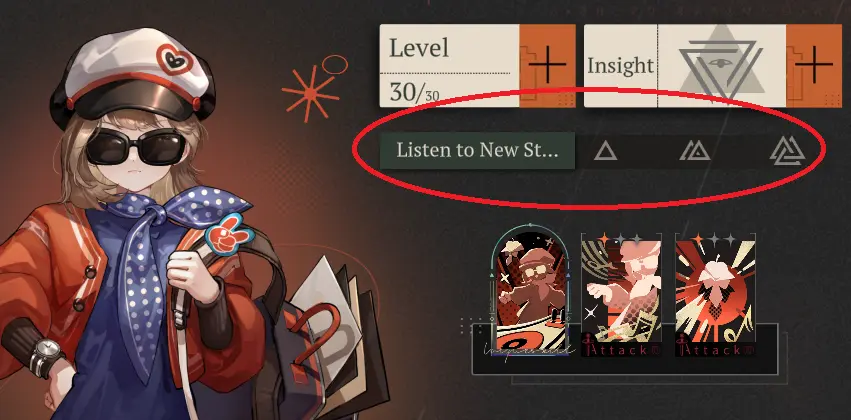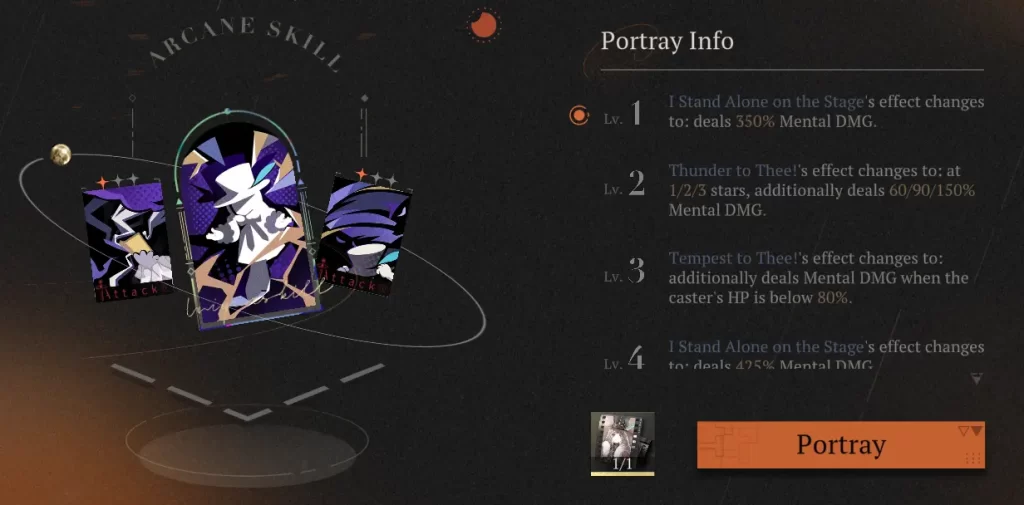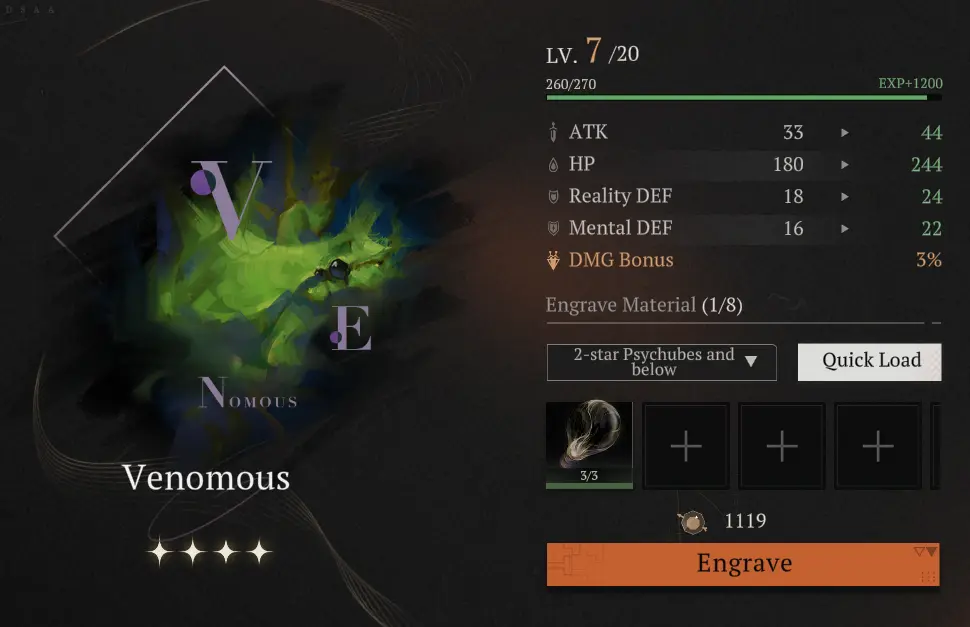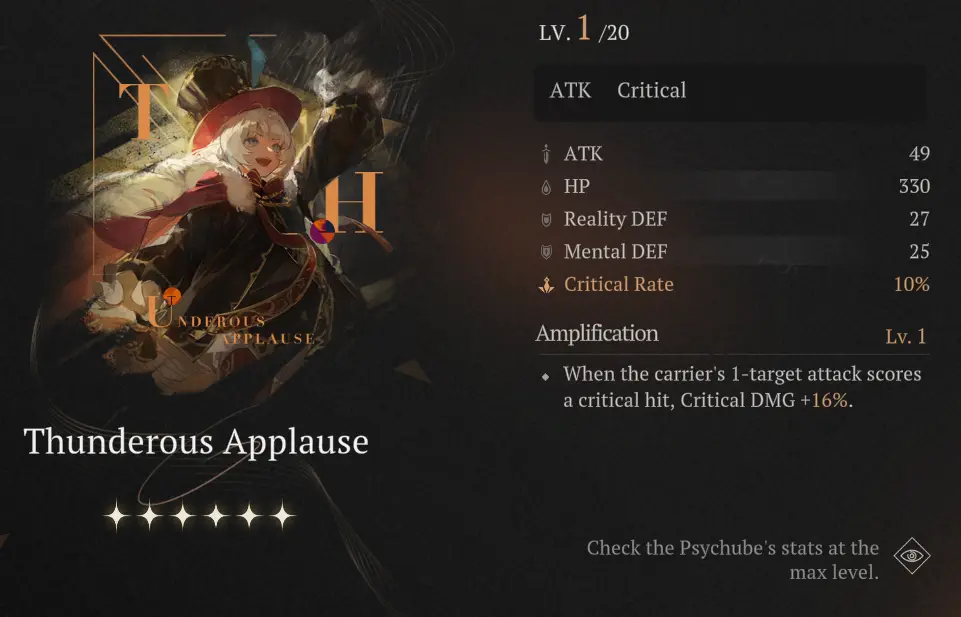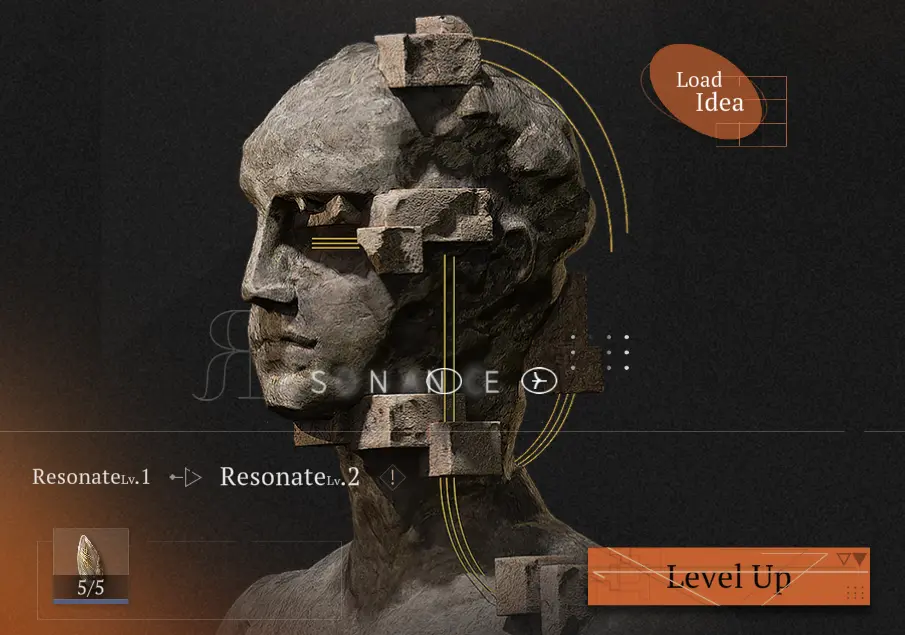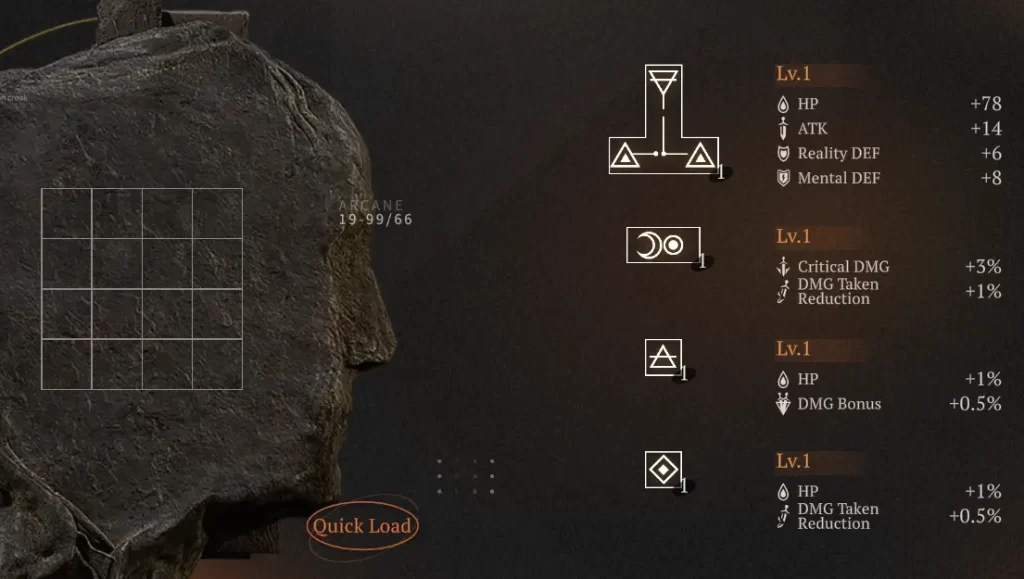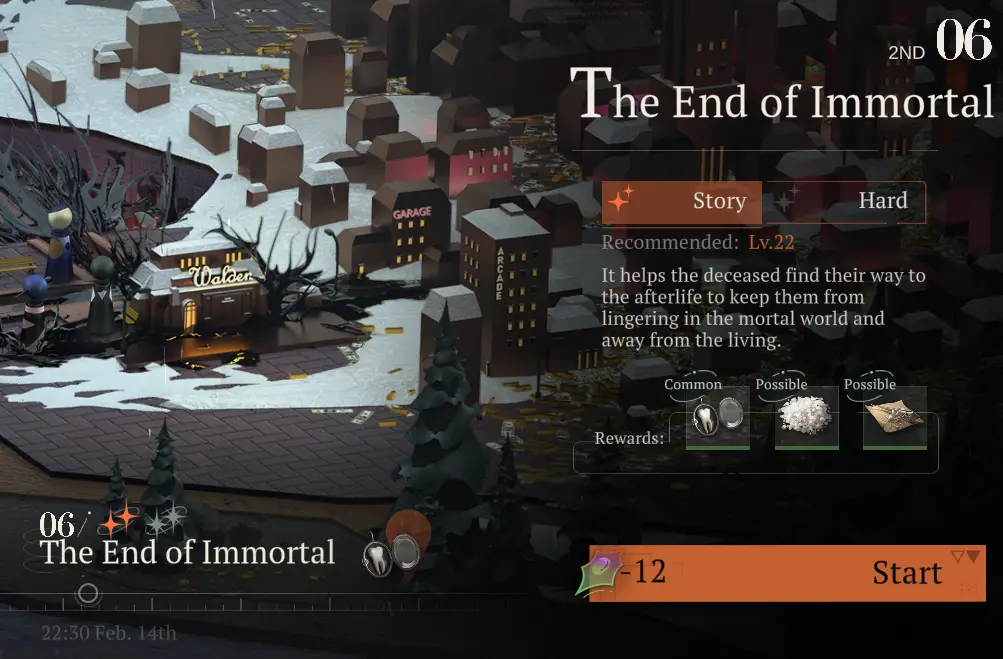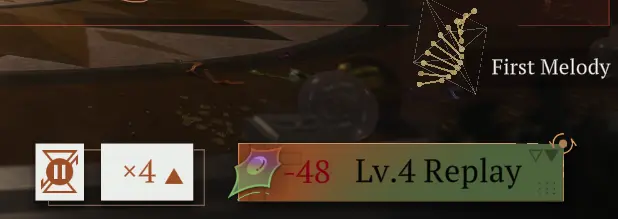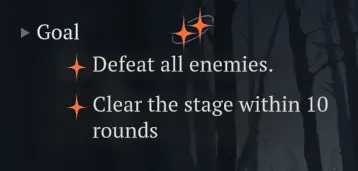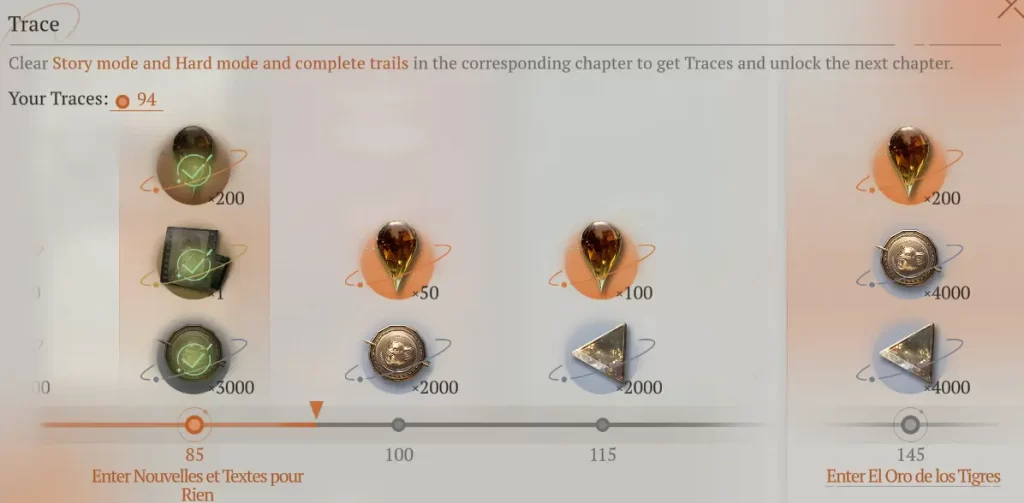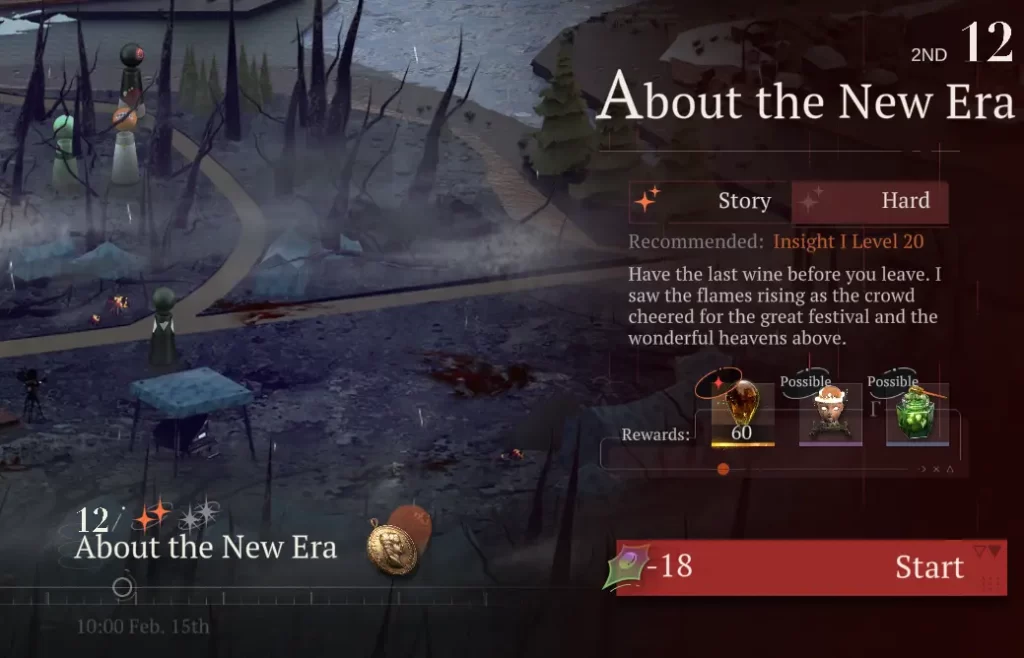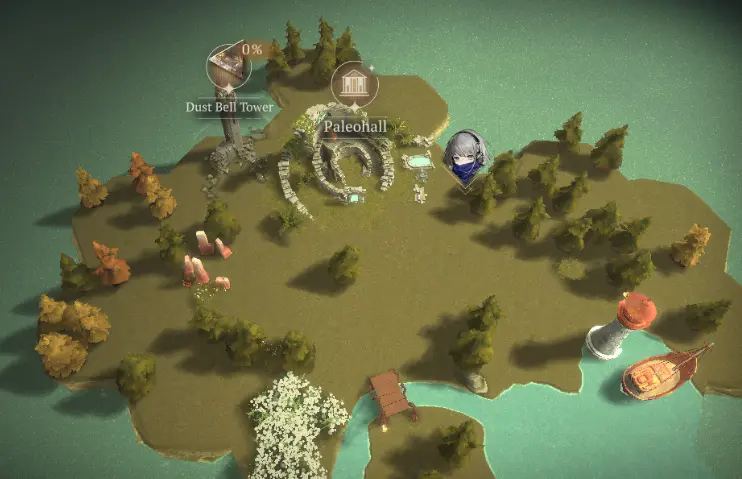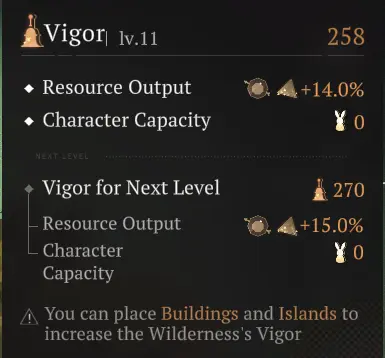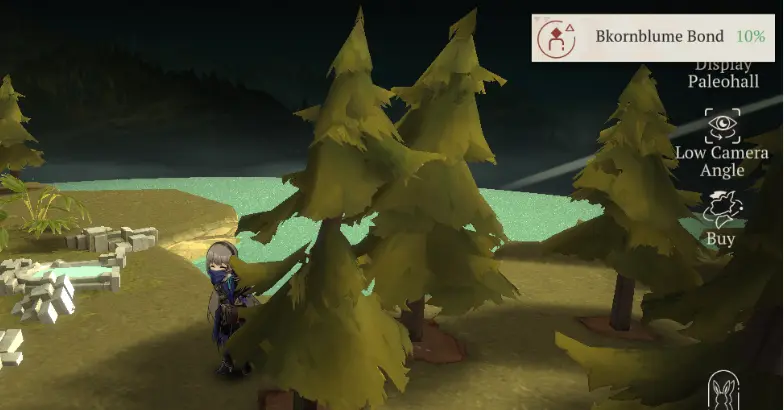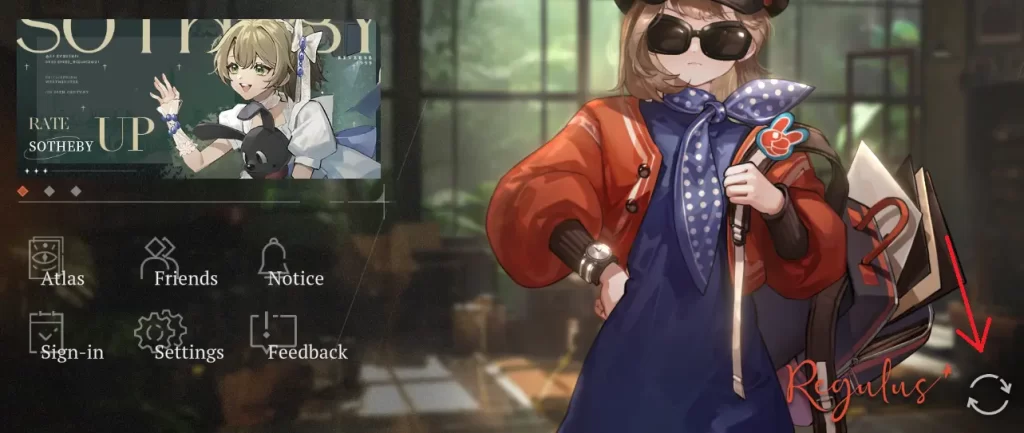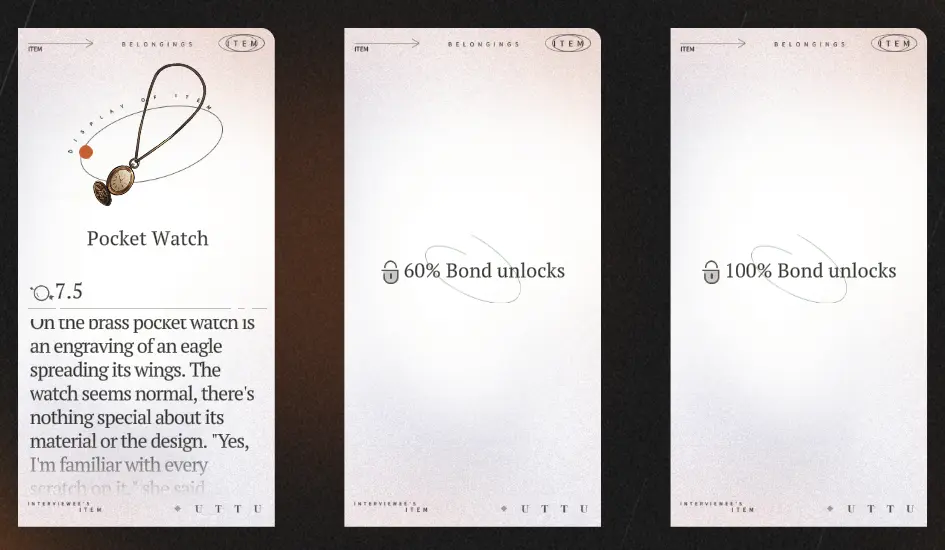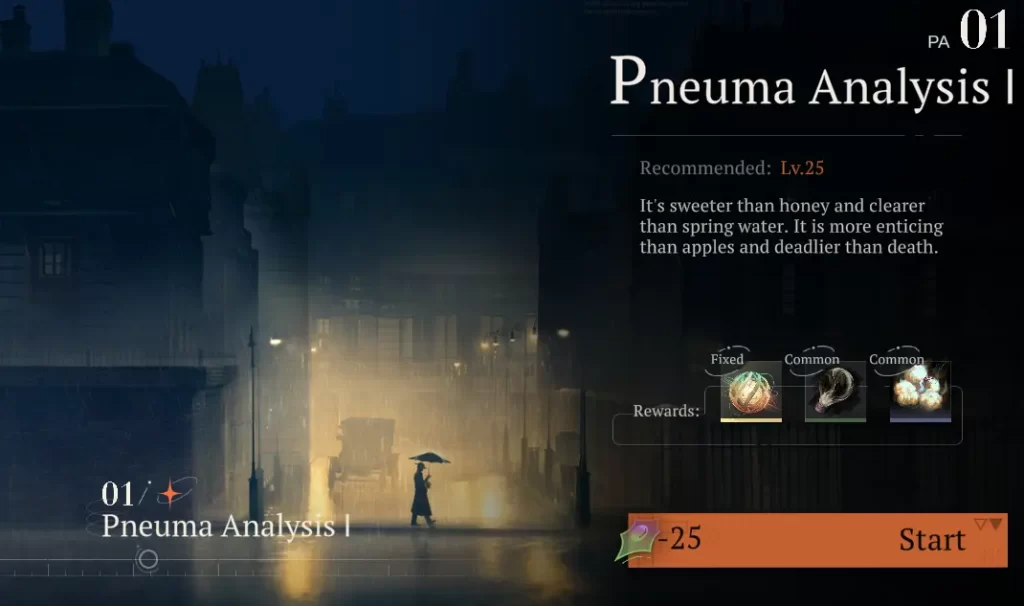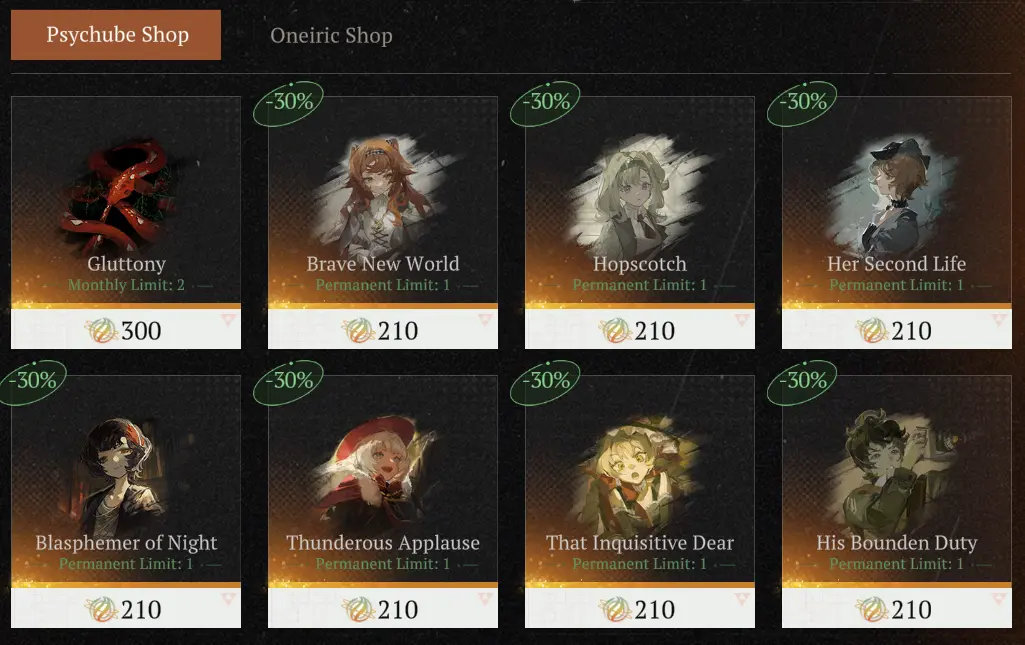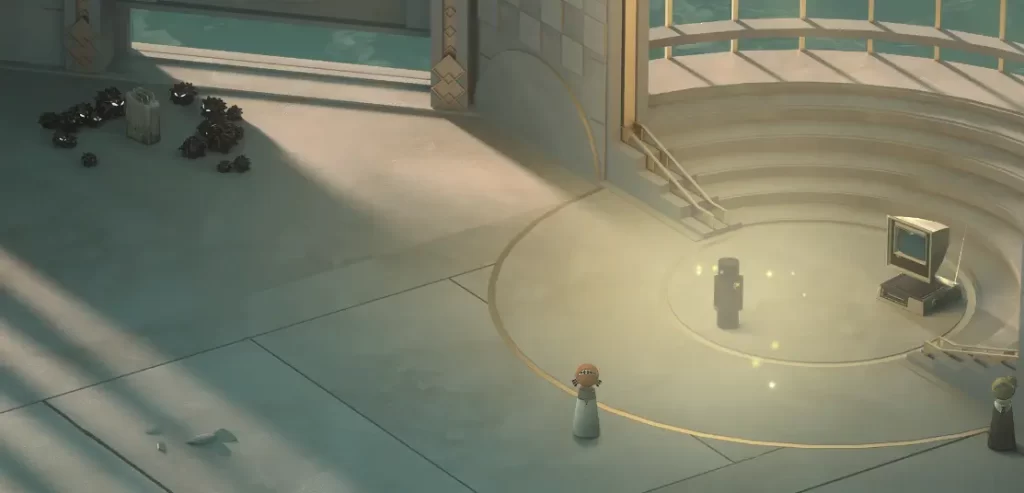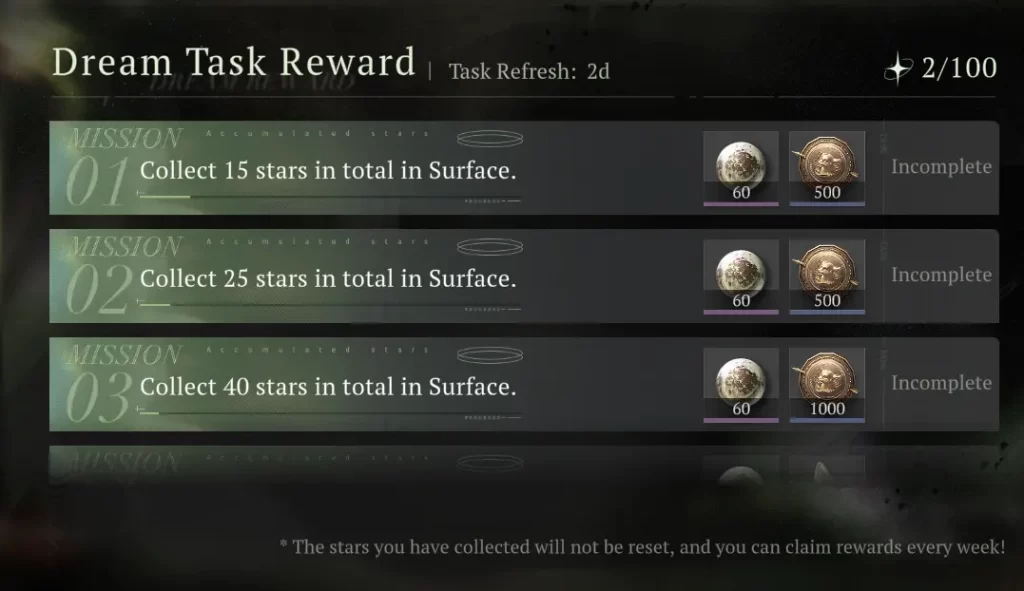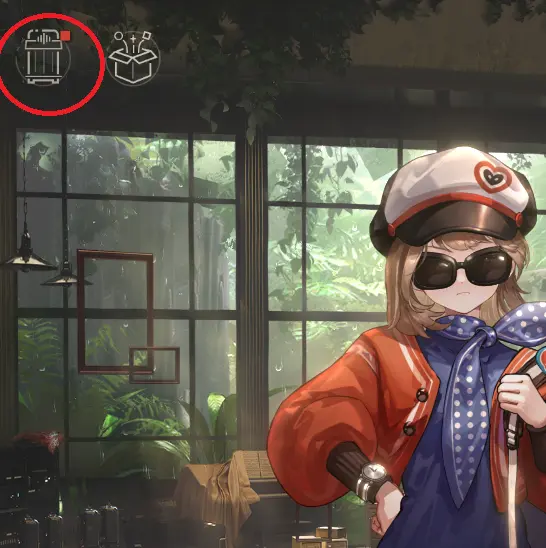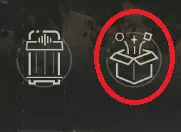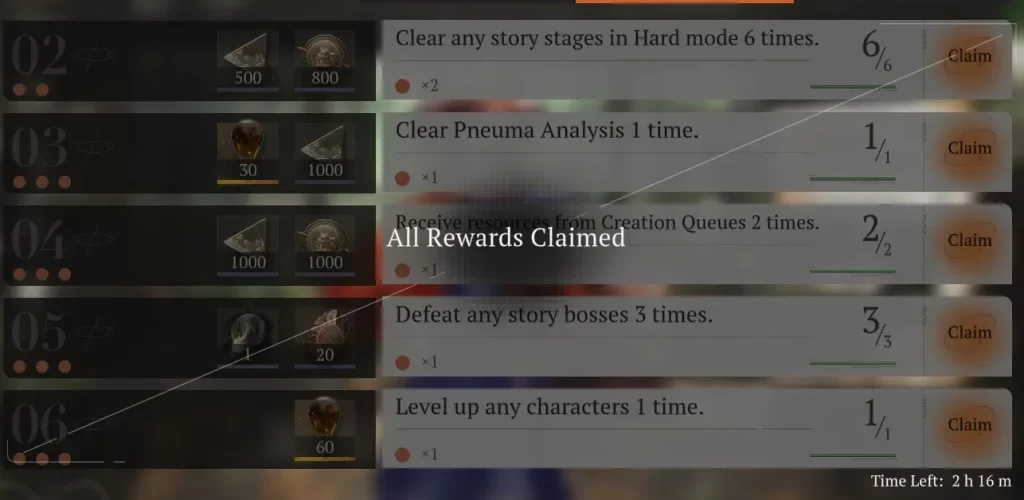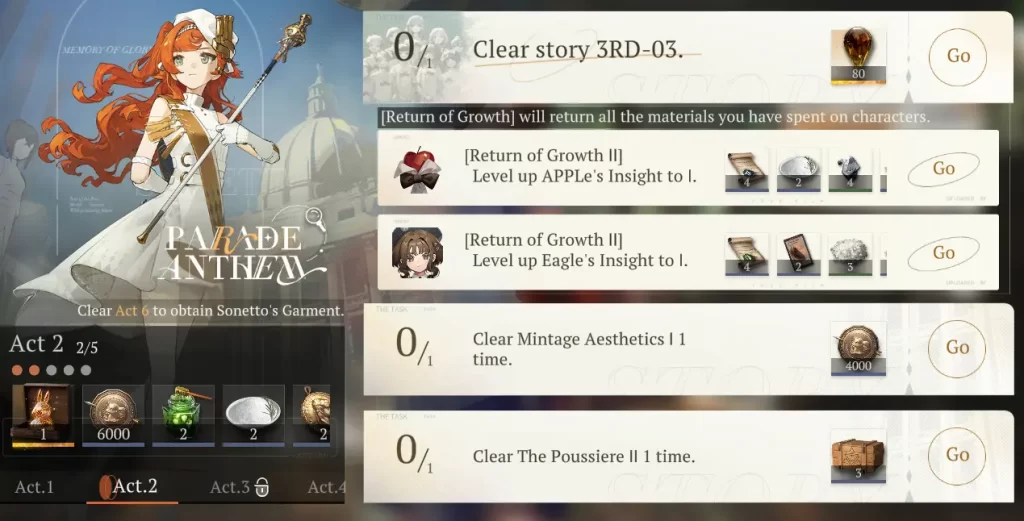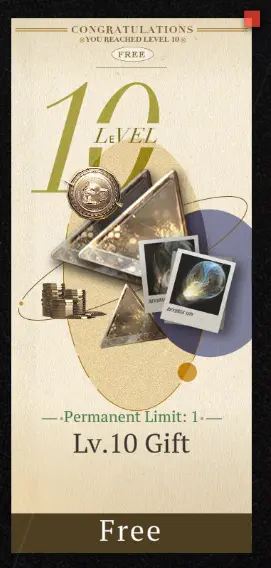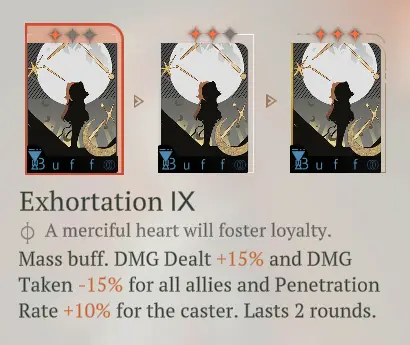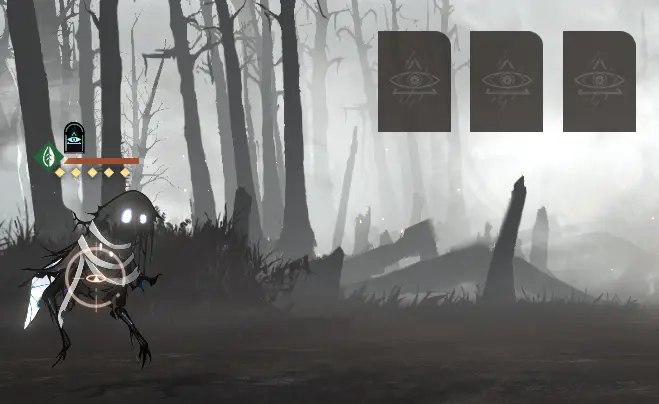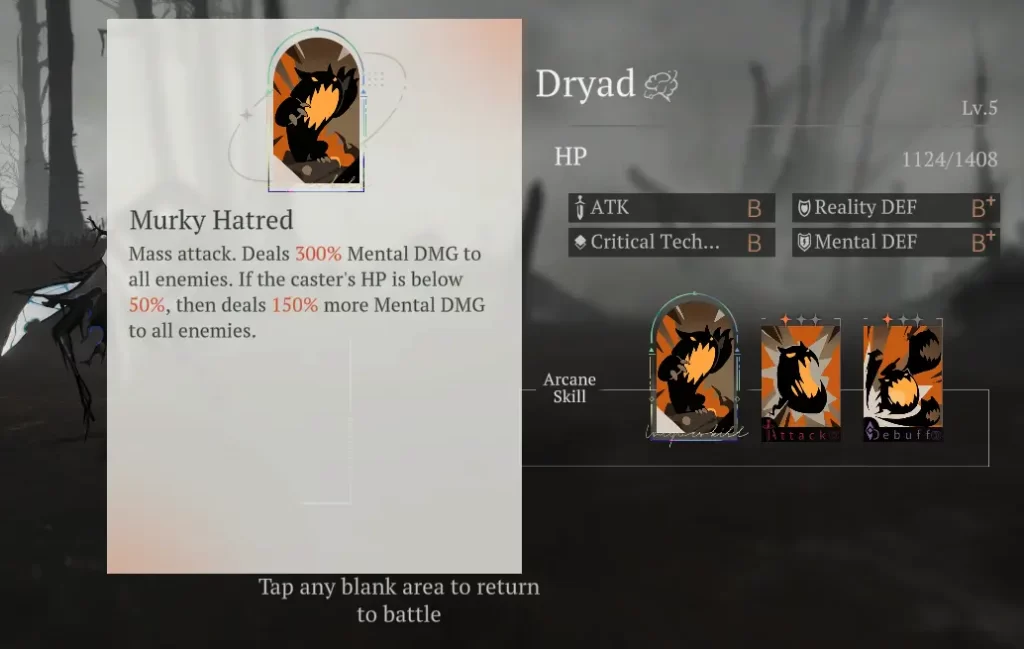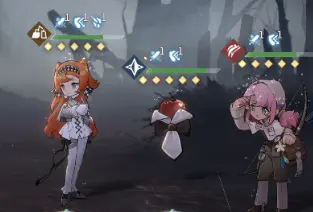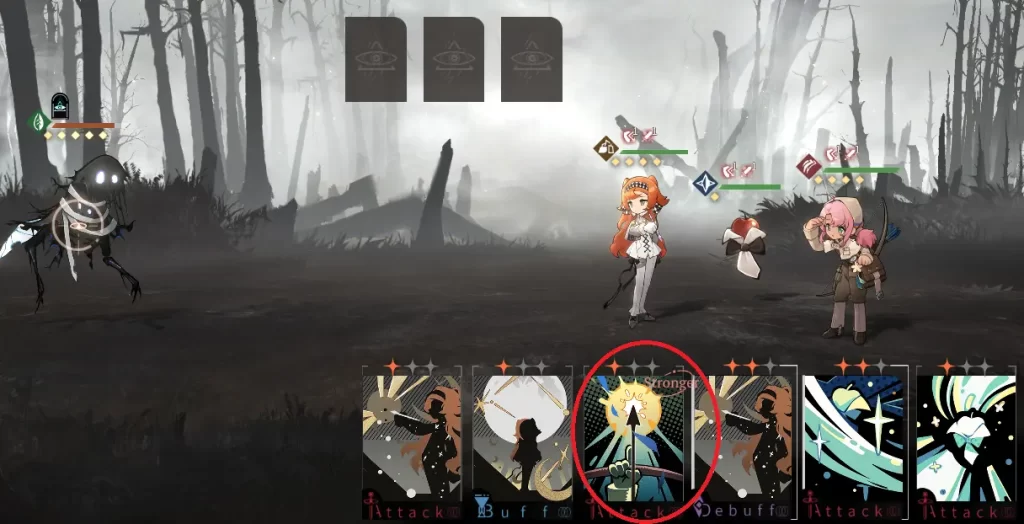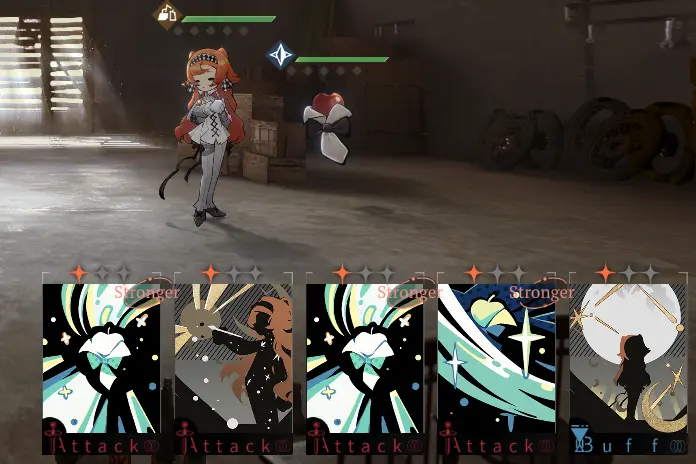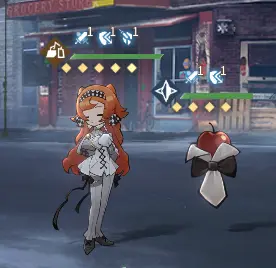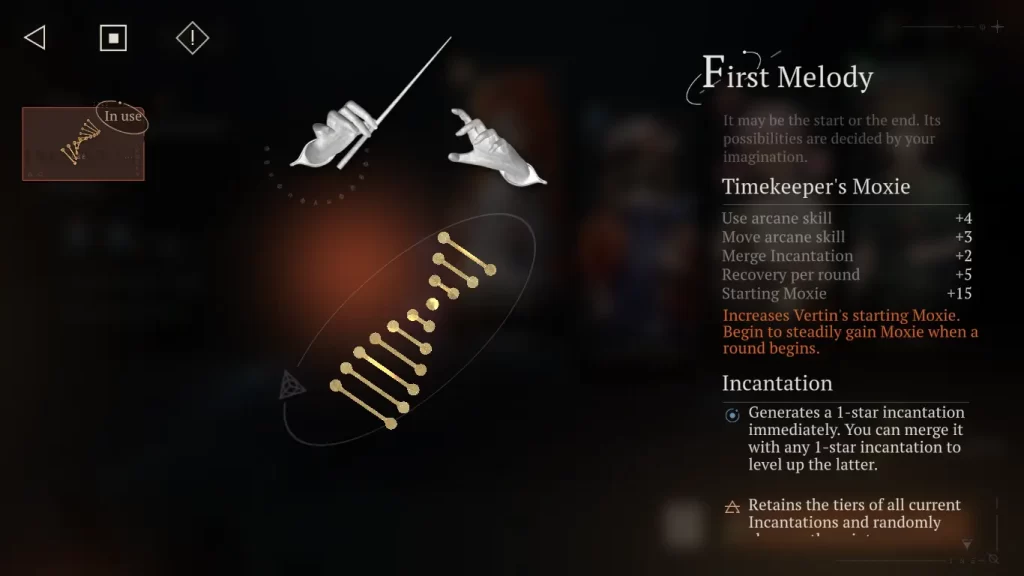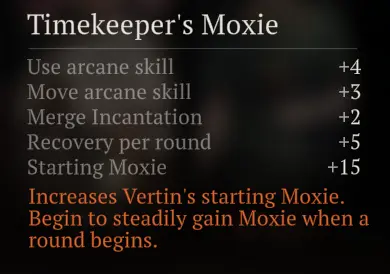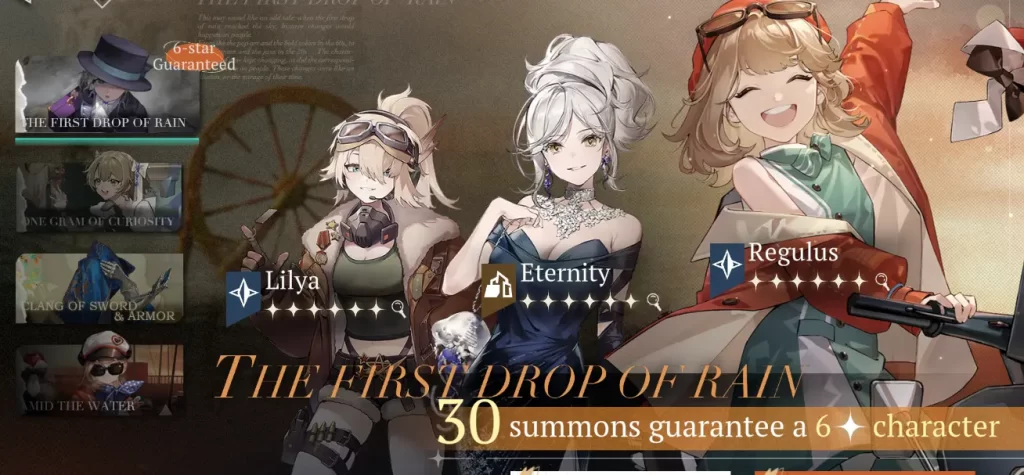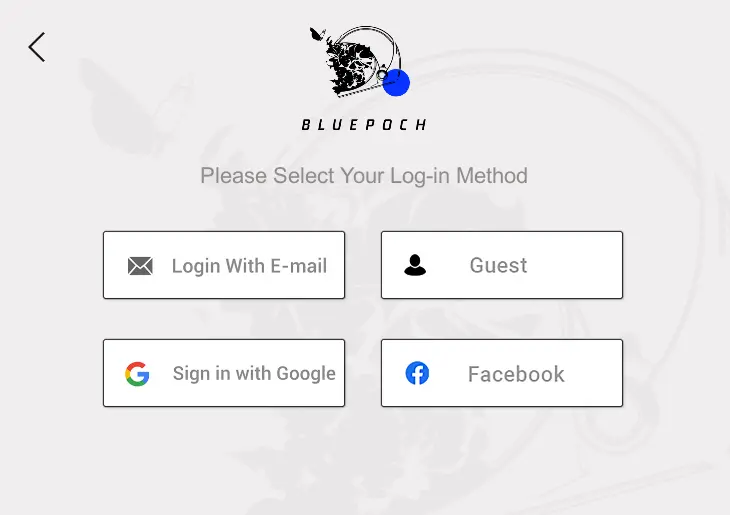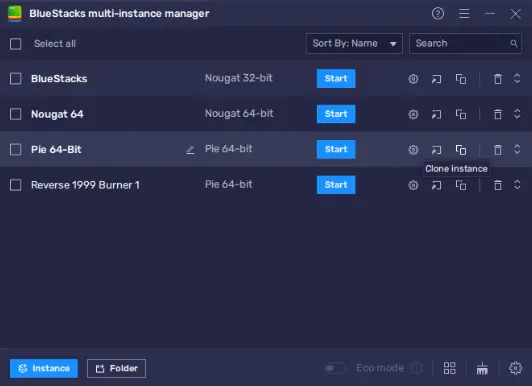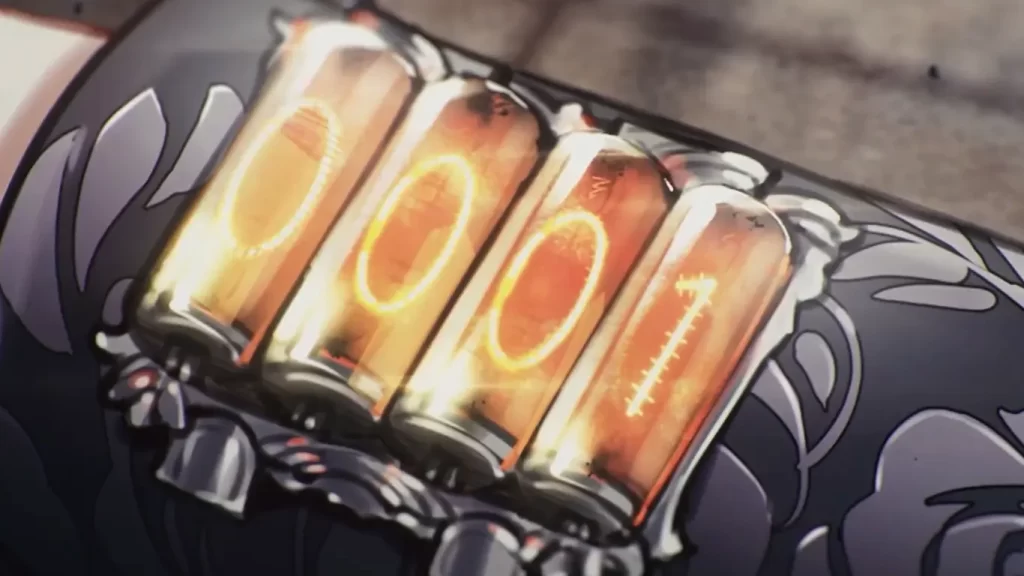It’s December 31, 1999. Your timer reads 40 minutes to go. This world will exist for only 40 minutes more. Take in the sights, the smells, the experiences. Remember the faces of the people around you, the friends you’ve made, the things you’ve seen. Because they’ll be gone, lost to time. But you? You’ll remain. You’re a constant in this strange cycle, and it’s both your burden and responsibility to oversee these endless cycles of destruction and rebirth.
But maybe, just maybe, this time will be different.
Reverse: 1999 is a strategic RPG that revolves around the coming of the “Storm”, a mysterious phenomenon that resets time at the dawn of the 21st century. All is not lost, however. As the enigmatic Timekeeper, you have witnessed innumerable beginnings and ends – and your unique ability to withstand the “Storm” and teach other mages to do so is the key to breaking the cycle.
Reverse: 1999 mixes and matches familiar gameplay elements – veterans of Fate: Grand Order will know – but expounds on them, making the game easy to learn but difficult to master. With beautiful music, incredible art, and exquisite character designs, Reverse: 1999 firmly carves out its own niche with its grim, resolute, yet hopeful personality.
Reverse: 1999 is available on both the Google Play Store and the App Store. If you’d like to use your hardware to push the game to its full potential, you can also play Reverse: 1999 on PC via a standalone client on the game’s website. And just to set things straight, I’ll be using the PC version for any images in this guide, for better clarity and quality.
As mentioned earlier, Reverse: 1999 adapts much of its core gameplay from existing titles, so mobile game veterans should have no problem quickly intuiting the game’s mechanics. If you’re completely new to the mobile RPG scene, however, you’re in the right place, and I bid you welcome to this beginner’s guide.
In this beginner’s guide to Reverse: 1999, we’ll be covering:
- Every bit of data that comes with your characters. You’ll learn how to read and analyze them so you’ll be able to make your own informed decisions on who to use and how to move forward.
- Strengthening your characters. Like I’m fond of saying, you still need brute strength to ensure that your plans don’t fall apart. We’ll talk about the various ways of bulking up your characters to ensure they survive the rigors of combat.
- Maximizing your early game resource gain. While it may not seem like it at the beginning, resources are scarce in Reverse: 1999, so it’s vital you learn how to secure more growth materials as soon as possible.
- Combat. The card-based combat of Reverse: 1999 may be simple to learn, but it’s always good to go over the basics.
- The gacha – the different currencies, spending your Unilogs, and a “quick” reroll guide.
Characters 101
All RPGs require a good understanding of how their characters work. Reverse: 1999’s characters are a very varied bunch, so let’s take the time to get to know who they are and how they work.
Quick Tips:
- All units have stats. Reverse: 1999 characters usually just deal with 4 stats – ATK, HP, and Reality/Mental defense.
- Defense is divided into Reality and Mental defense. Note that there is a third damage type – Genesis, which deals true damage.
- Critical technique covers both critical rate and critical damage.
- You can tap on a character’s stats panel to get a more detailed readout of their numbers.
- All units have 3 incantations (cards). These represent what that hero can do.
- When placed beside an identical incantation, cards are fused to increase their levels, up to level 3. Note that increasing levels isn’t always just a straight-up numbers boost.
- It always, always pays to read exactly what your characters’ incantations do.
- All characters have an Afflatus (element). Attacking an Afflatus you’re strong against deals 30% more damage.
- The Afflatus weakness cycle goes as follows: Beast (Red) > Plant (Green) > Star (Blue) > Mineral (Brown), and Spirit (Purple) < – > Intelligence (Yellow).
- Attacking an Afflatus you’re strong against deals 30% more damage.
- Psychubes are equipment. Each character can equip 1 Psychube.
- Focus on your rarer Psychubes and pass them around as needed. The game’s Psychube Preference system makes it easy to auto equip Psychubes.
- Tags help you quickly determine what a character’s role is meant to be. However, you should still take the time to get to know said character!
- A character’s rarity indicates its general performance and its growth potential characters. Rarer characters can grow more. However, most low-rarity characters (sans 2* ones that just explode) have some utility and are still worth using.
Related: Reverse: 1999 Tier List: Ranking the Best Characters in the Game
Unit Stats
The core of understanding a unit’s strength comes from being able to read its stats. Luckily, Reverse: 1999 has a very boiled-down basic stat system.
The five main stats that appear on a character’s sheet are:
- ATK – attack power. Almost every incantation a character can cast derives its value from their ATK. Note that this covers both Reality and Mental (physical and magical, in essence) damage!
- HP – hit points. How many hits this character can take before it goes down for the count.
- Reality DEF – defense power against Reality attacks.
- Mental DEF – defense power against Mental attacks.
On a side note, there’s a third damage type – Genesis – which is true damage that ignores all defenses.
- Critical Technique – a score that’s comprised of both critical hit rate and critical damage.
Critical Technique can be hard to decipher on its own. Luckily, you can tap on the stats panel to bring up a more detailed readout…
…which also shows some interesting substats. Don’t forget about this part when you get into fine-tuning your arcanists, and especially when you get into optimizing Psychubes!
Incantations
Everyone, from your time-traveling companion Sonetto to the lowliest of street punks, uses Incantations in battle. Incantations are essentially a character’s skills.
All characters have 3 incantation cards available to them. One of these cards is their ultimate, which we’ll cover in the “Moxie” section of combat. The other two are normal skills that can be played freely. Note that incantations vary very wildly from character to character, so be sure to read up on what they do.
There are two things you should know about incantations. First off, incantations have a tag below them that summarizes what they do. These tags are:
- Attack – this incantation does damage.
- Buff – this incantation strengthens one or more of your party members.
- Debuff – this incantation weakens one or more of your enemies.
- Heal – this incantation restores HP to one or more allies.
- Counter – this incantation activates a powerful effect when its trigger condition is met.
- Ultimate – this incantation is going to do something incredible. Great if you’re playing it, not so great if it’s your opponent playing it.
Note that incantations don’t strictly have to be just of one type. For example, APPLe’s Equal Amount of Light is labeled an attack incantation, but it also heals the ally with the lowest HP. A bit of reading can save you a lot of confusion and help you create a smoother, more effective team.
Secondly, incantation cards can be fused in battle. This happens when two of the same incantation cards are beside each other. Those two cards will automatically fuse to create 1 incantation card of a higher level.
An incantation’s level is indicated by the number of stars above it. 1-star incantations are the base form of an incantation, 2-stars are slightly better, and 3-stars are the strongest the skill can go.
Note that upgraded incantations can function very differently from their past forms. For example:
In the image above, we have Sonetto’s Commandment V incantation. At level 1 (leftmost), it’s a simple 200% Reality damage attack. But at level 2, the card’s tag is changed to debuff, and while it still does the same amount of damage, it also inflicts a Disarm debuff for 1 round. Finally, at level 3, the damage multiplier is increased to 300% and the Disarm debuff is extended to 2 rounds.
By studying the cards, we can see that if we just wanted raw damage, there’s no difference in between level 1 or 2 Commandment V. A bit of knowledge and reading will save you a lot of grief and help make battles easier.
Afflatus
Each unit in Reverse: 1999 has an Afflatus, which is a fancy way of saying they have an element.
There are six different Afflatus (Afflati?) in Reverse: 1999, and each of them is both strong against and weak to another Afflatus:
- Beast (Red) is strong against Plant (Green).
- Plant (Green) is strong against Star (Blue).
- Star (Blue) is strong against Mineral (Brown).
- Mineral (Brown) is strong against Beast (Red).
Finally, there are two more:
- Spirit (Purple) and Intelligence (Yellow) are both weak to each other.
Keep the different elements in mind as attacking an Afflatus you’re strong against deals 30% more damage!
Psychubes
Each character has a slot for 1 Psychube, which is equipment. The higher a Psychube’s rarity, the better its stats.
Psychubes boost a character’s stats and can vastly improve their performance. Because each character can only equip 1 Psychube and you can only ever deploy 4 units at once, it’s generally a better idea to focus on higher-rarity Psychubes that are shared between your units. The game itself encourages this as you can set a Psychube Preference per character which they will automatically equip (and take from someone else if needed) if they’re deployed to a fight.
Tags
Each character comes with tags, which help you quickly identify that character’s intended role.
While tags help you classify characters at a glance, I strongly urge you to read up on a character before blindly diving in – especially when it comes to their incantation!
Rarity
It wouldn’t be a gacha game without rarity. Each character comes with a certain number of stars which indicate how rare they are, with 6* characters as the rarest.
The rarer a character, the better it is…usually. However, rarer characters in Reverse: 1999 also have a much higher potential for growth thanks to the Insight system, which we’ll cover in a few moments.
However, I have to make a disclaimer here. Just because a unit has low rarity does not necessarily mean it’s not worth using.
Seeking Strength
Now that we know how to analyze our cast, it’s time to delve into the various methods of making them stronger.
Quick Tips:
- Leveling up characters is the most basic way of strengthening them.
- Leveling up gets expensive pretty quickly. I strongly suggest focusing on a carry and a few key characters instead of spreading exp around.
- Feel free to level up Sonetto, APPLe, Leilani, and Eagle as the “Return of Growth” quests in the “Beginning of the Tale” beginner quest series will refund any materials you’ve spent.
- You don’t really need a healer in the early game as you can brute force with enough levels/Insights. Late game, however, pretty much requires a healer and/or a defensive support.
- At certain levels, you’ll need to perform Insight to improve a character to increase their level cap.
- Insights also provide potent passive buffs to each character.
- The higher a character’s rarity, the more Insights it can undergo.
- Portray lets you improve a character’s passive abilities by sacrificing duplicates.
- Psychubes can be engraved to improve their stat boosts. Once again, it’s a good idea to just focus on a few rare Psychubes.
- 5 and 6* Psychubes have an additional ability. This ability can be amplified by sacrificing duplicates of that Psychube or the special item “Gluttony”.
- Resonance allows you to slot ideas, which gives stat boosts. You’ll need to determine which ideas to slot and how to arrange them to maximize this system.
Leveling Up and Budgeting
Standard RPG fare – pump levels, get stronger. Not exciting, but reliable and deterministic. Leveling up costs both Dust (exp material) and Sharpodonties (money)
However, leveling gets expensive in Reverse: 1999. It may not seem like it when you’re rolling in beginner loot but trust me – once your initial coffers run dry, it’s going to be an uphill battle to get those levels.
Because of this, you must learn to budgetyour initial stores. Here are a few pointers on early leveling:
- You can freely level Sonetto (which I recommend anyway as she’s quite good), APPLe, Leilani, and Eagle (also a solid choice) as one of your beginner quests will fully refund your spent Dust/Sharpodonties and reset them to level 1.
- Find a good damage dealer early on and stick with them. They should receive priority when it comes to leveling. The earlier you can commit to one, the better; usually it will be one of the guaranteed 6*s from the beginner banner.
- There are a lot of very good offensive supports in the game, such as those that increase certain damage types, reduce enemy defense, and so on. Pick one that suits your main damage dealer (Sonetto will do in a pinch).
- You won’t need healers or defensive supports until much later in the game – even when the game urged me to have a healer, I simply brute-forced with more levels and Insights on my main damage dealer and offensive supports. Early on, you can get by with APPLe but do note that you get Dikke as a login reward down the line, and she’s a much better healer. Level your healers/defenders as needed.
Insight
You can’t level characters indefinitely. Every so often, you’ll need them to gain Insight. This requires not only Sharpodonties but also Insight materials.
Undergoing Insight not only raises a character’s level cap but also unlocks some nifty passives for them. For some characters, the whole point of leveling up is to unlock their Insight boosts. Luckily, you can preview these by tapping…
Here’s where rarity comes in. The higher a character’s rarity, the more Insights they can undergo. 5* and 6* characters benefit the most as they can undergo Insight thrice. 4* and 3* characters are behind here, as they can only undergo Insight twice, which means they have a lower level cap and fewer passives to work with. On the other hand, they are cheaper to raise, and some of them are surprisingly very good units!
Portray
The Portray system allows you to put character duplicates to use.
Every time you pull a duplicate of a character in the gacha, you’ll gain 1 of their Artifices. Each Artifice allows you to add 1 Portray level, which provides even more passive boosts on top of Insights. While this method of growth is much less deterministic than others, do keep it in mind and remember to Portray any dupes you have.
Psychubes, Engraving, and Amplification
As mentioned earlier, each of your arcanists can equip a Psychube, which is essentially equipment. However, just slapping a Psychube on isn’t the end of the story. Each Psychube can also be engraved by sacrificing materials and/or other Psychubes, which will boost its stats.
Note that Psychubes, like arcanists, have a level cap. Every so often, you’ll need to sacrifice some materials (which can be acquired by doing Pneuma Analysis and/or bought at the Psychube Shop via Pneuma Analysis currency) to increase its level cap.
On top of this, 5 and 6-star Psychubes can also be amplified by sacrificing duplicates of themselves or special materials (namely Gluttony). Each of these Psychubes has a unique effect that can further be strengthened via amplification to a maximum level of 5.
Remember: because each arcanist can only have 1 equipped Psychube and there’s an in-game system for quickly swapping them around, I strongly suggest focusing on just a few high-rarity Psychubes.
Resonance
Resonance is unlocked once you clear stage 3-2. This growth method allows you to fine-tune characters by loading ideas into their heads. Where have I seen this before?
In the Resonance interface, you can Load Ideas into a small grid. Each idea confers different stat bonuses and has a different shape – it’s your task to fit the best pieces as neatly as possible to get the most out of this system. Luckily, the pieces can be moved around freely and can be rotated by tapping on them.
To get more ideas, you’ll need to increase that character’s Resonance level. You get the required materials for this from the Artificial Somnambulism mode – more on that in the next section.
Sourcing Materials
Now that you know how to bulk up your arcanists, it’s time to sink our teeth into the various farming methods in Reverse: 1999. In this section, I’ll walk you through the basics of farming – the important game modes you have to farm, where to get more of the materials you need to become stronger, and where to nab some free stuff along the way.
Quick Tips:
- I’ll be adding two tables here – one will show you where to get most materials (at least in the early game) and the other will show you the important stages you should ideally rush to complete to unlock certain features.
- You can always tap on an item in your Warehouse or inventory to bring up a panel that will show where to get more of it.
- You can replay stages you’ve already completed to collect materials and resources. The best way to do this is by using the replay system, which can go up to 4x.
- You get rewards based on how many total stars you’ve accumulated from clearing stages. More stars mean more prizes.
- Once you’ve unlocked Hard mode, be sure to check the stages you’ve already completed for new drops. Unlike Story mode, you don’t have to complete Hard mode stages in sequence.
- NEVER EVER NEGLECT YOUR WILDERNESS GAINS. Leveling in Reverse: 1999 gets hilariously expensive later on. Any free source of Dust and Sharpodonty is good.
- Your Dust and Sharpodonty gains in the Wilderness are dependent on your Vigor. Put more islands and place more facilities to boost Vigor.
- You can invite characters to your Wilderness to raise their bond levels. You can also interact with them in the lobby or bring them into battle to raise bonds.
- At certain bond levels, you’ll unlock more of those characters’ stories, which nets a small number of Clear Drops.
- Pneuma Analysis is very important. You farm Psychubes, Psychube materials, and Psychube Shop currency here. More importantly, you get two free enhanced daily runs in this mode.
- Artificial Somnambulism puts you up against various dream scenarios. The first 10 levels of this mode are the Surface level. Stars you earn here are permanent, and you can redeem weekly rewards based on how many stars you have. Yes, it’s literally free stuff.
- Limbo stages in Artificial Somnambulism reset every 1st and 16th of a month. Clear these stages to get more resources, like Clear Drops.
- Do the battle pass quests to snipe some freebies. Not much, but it helps.
- Always check your events.
- The most important freebie events for new players are a free 6* Psychube selector which you get from “8 Daily Letters”, day 5. I strongly suggest picking a Psychube for your main damage dealer. You will likely not have this opportunity again.
- Other notable prizes include the 5* character Dikke from day 8 of “8 Daily Letters” as well as a lot of Unilogs from both “8 Daily Letters” and “Storm Visitors”.
- Always do your dailies. It takes just 5-10 minutes to do all of them and they give you Clear Drops, resources, and currency.
- The “Beginning of the Tale” newbie quest chain gives you 5* Psychubes for completing Acts 3 and 5, as well as an outfit for Sonetto for clearing Act 6. You also get a lot of Clear Drops and other resources from it.
- You can redeem a free item pack from the shop every 5 account levels. It’s not much, but every bit helps.
Reference Sheets
If you’ve already got the gist of the “earn materials – strengthen characters” loop and just want to know where to get certain materials, here’s a reference sheet:
| Material | Where Do I Get More of It? |
| Sharpodonty | Clearing stages, Wilderness, Mintage Aesthetics. |
| Dust | Clearing stages, Wilderness, The Poussiere. |
| Insight Materials | Clearing stages, Insight Material stages |
| Psychubes | Pneuma Analysis. Note that this also yields engraving materials and Thoughts in Entirety (Psychube shop currency) |
| Clear Drops | Clearing levels for the first time. |
And here’s another to help you target specific stages to unlock more farming opportunities:
| Unlocked Feature | When Do I Get It? |
| Double battle speed (tap the arrow on the upper left while in combat) | Clear 1-1. |
| The Poussiere (Dust farming stage) | Clear 1-11. |
| Wilderness | Clear chapter 1 (ends at 1-16). |
| Hard mode | Clear 2-6. |
| Insight Material stages | Clear 2-8. |
| Psychubes/Pneuma Analysis | Clear 2-10. |
| Resonance/Artificial Somnambulism | Clear 3-2. |
A Foreword
One important thing I should point out is that the game itself offers you a ton of information on where to source materials. All you need to do is tap on an item in your Warehouse (or inventory) and this will bring up a panel showing where you get more of said item.
Stage Farming and Replay Mode
One of the more reliable ways of securing resources is farming stages. You can replay any stage you’ve already completed so long as you can pay the stamina cost.
Any stage that you’ve completed (I forget if you need a perfect victory) will have a replay saved. This replay records every action you and your opponent took, what units you used, and how much damage each attack did, allowing you to quickly clear the stage. However, the best part of replay mode is that you can crank the stamina cost, and thus the resources, to up to 4x. This allows you to farm both quickly and efficiently.
Remember – you can do this in any stage you’ve completed, whether it’s in Story mode, Pneuma Analysis, and so on. This can be put to great effect if you know where to find stuff. Need tons of Dust? Replay The Poussiere. Sharpondonties? Mintage Aesthetics. Insight materials? Go to their dedicated stage or Story mode level.
Traces and Trace Goals
Each level in Reverse: 1999 has some optional objectives that you can complete for more prizes.
By completing the bonus objectives in a level, you’ll get more Traces. The more Traces you get, the more prizes you unlock. While you do get one Trace just from clearing a stage as well as from clearing Trace events on the map (which sometimes appear after a stage and are required to progress), you may as well go for perfect on the first try to save stamina and effort. The more Traces you accumulate, the more prizes you can redeem.
More importantly, getting both Trace marks is required to unlock that stage’s Hard mode version.
Hard Mode
Once you clear stage 2-6, you’ll gain the ability to revisit previous stages and challenge them again, this time with greater difficulty and more prizes on the line.
Hard mode for a stage is unlocked if you’ve cleared Story mode with two stars. Note that Hard mode stages do not have to be unlocked in sequence – so long as you’ve beaten Story mode perfectly, you can go to the Hard mode version of that level.
Hard mode stages are difficult not only because of the large stat boosts that enemies enjoy but also because of their unique stage challenges. Each Hard mode level has one or more modifiers that make clearing the stage trickier. Be sure to account for these changes in your strategy.
The rewards for clearing Hard mode, however, are worth it. On top of another source of Clear Drops for finishing the level, you can also get more Dust, Sharpodonties, and Insight materials – not to mention the extra 3 Traces from a perfect clear!
The Wilderness
The Wilderness is Reverse: 1999’s AFK gains system. Unlocking this ASAP is very important as you’ll want to secure a large amount of both Dust and Sharpodonty as early as possible.
The Wilderness is unlocked after clearing the first chapter. It’s something like a housing feature in that it all happens inside your suitcase. You have free reign over its layout, and you can place islands and buildings as you please. More importantly, the amount of effort you put into building your Wilderness affects your passive Dust and Sharpodonty gain!
To collect your resources, tap on your Paleohall. Harvested resources appear on the right-hand side of the screen, and by upgrading the Paleohall, you can build more resource-generating facilities (Dust Bell Towers and Sharpodonty Markets). Be careful though, as there’s a cap to how many resources can be held at once. Check back and claim them as often as possible!
Dust and Sharpodonty gain is influenced by your Wilderness’s Vigor stat. Raising it is simple – just plop down more islands and facilities. There’s a bit of an inventory management puzzle vibe here as certain buildings require geographical features and large spaces, but with a bit of fiddling, you can do it. And remember, the more stuff you have, the bigger your gains.
Bonds
One other thing you can do with the Wilderness is to invite characters to visit it.
This isn’t just a cute feature. By allowing characters to kick back and relax in your Storm-immune garden, you’ll build up bonds of friendship and trust.
You can also gain bonds by bringing a character into battle or tapping on them on the main menu (though this seems to have a limit). To switch characters on the main menu, tap on the settings menu on the left side of the screen, then the refresh arrow on the right side:
If a character likes you enough, they’ll open up more and you’ll get to see more of their story, which helps you understand them better…
…but more importantly, unlocking their special items and stories nets you some Clear Drops. Score!
Pneuma Analysis
Speaking of dailies, Pneuma Analysis is one of the more important daily tasks you should do.
Pneuma Analysis is a game mode that allows you to grind for Psychubes as well as engraving materials. The special thing about Pneuma Analysis is that you get two free entries per day – with enhanced drops – and you can still spend stamina to enter afterward if you want. In the beginning, you’ll want a core set of decent Psychubes; after all, some stats are better than no stats. However, what you really want from Pneuma Analysis are the Thoughts in Eternity.
Thoughts in Eternity are a special currency that can only be earned from your bonus Pneuma Analysis runs. These can be spent in the Psychube Shop to buy incredibly potent 5* Psychubes!
Note that each 5* Psychube can only be bought once. On the plus side, you can also buy two Gluttonies per month in the same store, which will allow you to amplify these high-quality Psychubes.
Artificial Somnambulism
Artificial Somnambulism is unlocked at the same time as Resonance, that is to say by clearing 3-2.
In Artificial Somnambulism, you’re tasked with jumping between dreams and accumulating stars from completing challenges. You’ll need to tap on various things in each dream sequence to find stuff to do. Sometimes it’s text-based challenges, other times it will be fights. Clearing these tasks gives you stars, and the more stars you earn, the bigger your prizes. Said prizes are quite generous: Clear Drops, Resonance materials, and Thought Elements that can be exchanged in the Oneiric Shop.
And that’s not to mention that your progress in the initial 10 dreams isn’t reset – but the prizes are, meaning you get free stuff every week based on your total, permanent progress. If that isn’t motivation to rush through this mode ASAP, I don’t know what is.
Artificial Somnambulism has two modes – Surface and Limbo. Surface stages are comprised of the initial 10 that the game gives you. These give out one-time rewards for clearing them on top of the weekly rewards for getting stars in Surface mode. Limbo mode, on the other hand, is a series of special stages that reset on the 1st and 16th of each month. Clearing Limbo stages nets you extra rewards, such as more Clear Drops.
Battle Pass
Virtually every game these days has a battle pass. To access Reverse: 1999’s battle pass, tap on this button in the lobby:
This will bring you to the battle pass menu. Like every other battle pass, there’s both a paid and a free version. Be sure to turn in your quests here to claim your freebies – these quests do not show up in your tasks list!
Events
Every game has events, too. Always make it a point to participate in events as they streamline farming and give you some nifty stuff. The button for events is located to the right of the battle pass – it’s the one with the exploding box.
As a new player, there are two important events you should check every day:
- “8 Daily Letters” gives you login rewards for 8 days. Aside from Unilogs, you also get a Carrierwave Carrier on day 5 which lets you select a 6* Psychube of your choice. I strongly suggest getting one that suits your primary damage dealer – by the 5th day, you should already have an idea of who on your team is up to the challenge.
- “8 Daily Letters” also gives you Dikke on the final day. Dikke is a powerful 5* healer who should be more than enough to get you going if you haven’t yet decided on a dedicated medic.
- “Storm Visitors” gives you a total of 10 Unilogs over 7 days.
As you continue playing, don’t forget to check the current events!
Dailies and Weeklies
Thanks to the replay system, completing your dailies and weeklies in Reverse: 1999 is laughably easy.
Make it a point to finish these as they give out not only core resources (Dust, Sharpodonty) but also Clear Drops and currency for special shops.
Beginning of the Tale
The “Beginning of the Tale” quest series is designed to help new players get used to Reverse: 1999’s game mechanics. A lot of your starting resources will also come from here, so always check back. You can find this in the “Task” menu in the lobby – the same place where you can see your daily and weekly quests.
Aside from Sonetto’s costume for completing Act 6 of the questline, you’ll be pleased to know that there are two 5* Psychubes that you can get from this: The Footloose is a decent starter Psychube for your damage dealer and comes from completing Act 3, while Laughter and Laughter comes from Act 5 and is excellent for your healer.
Shop Freebies
Last but not least, let’s talk about shop freebies. For every 5 account levels you earn, you’re entitled to a free shop pack. Go to Bank -> The Teller Machine then scroll all the way to the right to claim your prize.
It’s not much, but we need to take what we can get.
Mastering Combat
Let’s talk about combat. Exploring the world and correcting (altering?) history means we’ll face a ton of resistance, but by arming our arcanists and learning how to make the most of their unique abilities in battle, we can overcome any challenge in our way.
Quick Tips:
- Combat in Reverse: 1999 is turn-based. You and your opponent take turns playing incantations against each other.
- The number of actions you can take in each turn is determined by your Action Points (AP). In general, you get 1 AP per character.
- There’s no limit to character actions in a turn. If you draw a hand of only one character’s cards, they can keep acting so long as you have the AP to pay for their actions.
- You can retract orders by tapping on incantations in AP slots. Be wary that once all AP slots have been filled or spent, your characters automatically act.
- Because actions are executed left to right, you can cue “preparation” actions such as buffs and debuffs before hitting your enemy with powerful incantations.
- You get a preview of what types of cards your opponent will play on their turn. These appear on top of the life bars of the acting enemy.
- Each card back corresponds to a different type of incantation, and the background color of that card shows the level of that incantation – white is level 1, blue is level 2, and yellow is level 3.
- You can long tap on an enemy to get an approximate reading of its base stats as well as see its incantations.
- Enemies do not change their mind on what card they will play.
- Buffs and debuffs as well as their timers can be found above a unit’s head. You can tap on these icons to get a more detailed readout of each effect on a unit.
- Cards that would do more damage due to Afflatus weakness are labeled “Stronger” in your hand to help you make better plays.
- Cards deal more damage via a condition (ex: if an enemy has < 50% HP this does more damage) will have an upward arrow in their upper left if the condition has been met.
- You can target a new enemy per incantation; just tap on the enemy before tapping the card.
- Cards are automatically fused if they end up beside each other. This can be done by playing the cards in between them or by moving cards. Note that moving cards costs 1 AP.
- Moxie is generated when you use incantations or move cards. Once a character has 5 Moxie, one of the cards you draw next hand is guaranteed to be their ultimate incantation.
- If you need to rush to someone’s ultimate, have them use more incantations or move their cards around.
- Remember that enemies generate Moxie just like you. Keep an eye on their Moxie levels.
- Tuning allows you to affect the battle with your Timekeeper. Certain actions generate Moxie for your chosen Tuning tool and each incantation you cast with it consumes some of its Moxie.
- At the start of battle and the end of your turn, you draw cards until you have your maximum hand size (this depends on how many active characters you have) in your hand. These cards are randomized from the pool of incantations your active characters have.
- You don’t discard your hand at the end of your turn. This means you can hold important cards such as heals or defensive buffs until you need them.
Action Points
As Reverse: 1999 is a turn-based game, you’ll need some way to determine how many moves each player can make. This is measured via Action Points (AP).
The amount of AP you have each turn is represented by grayed-out cards in the middle of the screen. As a general rule, each of your characters generates 1 AP per turn. AP is spent by playing cards or moving them around.
To play an incantation, tap it. If you change your mind, just tap on an incantation to remove it from your queued actions. Once all AP slots have been filled up, your characters will automatically act, executing the incantations you’ve listed from left to right.
Maximizing Your Sequence
Because of this sequential action order, it can be beneficial to queue skills for maximum effect. For example, Sonetto’s Exhortation IX incantation is a party-wide buff that increases the damage your party does, reduces the damage they take, AND improves Sonetto’s Penetration stat.
Thus, to maximize the benefits we get from this skill, it’s ideal to cast Exhortation IX as soon as possible – meaning it should go first before any attacks on that turn land.
This is just one example of how to optimize your action. Don’t just caveman shuffle your incantations; plan ahead and think carefully to get the most out of your team!
Intent
Once you’ve spent all your AP, you’ll draw a new hand and it’ll be your opponent’s turn to move. Luckily, we don’t have to wade in blind as you can see the intent of each enemy during your turn.
Each enemy will have card icons above its health bar to indicate what kind of card it will be playing next turn. These cards follow the same classification as your incantations, though you can only see their backs.
The intents and their corresponding card backs are:
- Attack – a red sword.
- Buff – a blue inverse triangle.
- Debuff – a purple diamond.
- Heal – a green leaf.
- Counter – a brown shield.
- Ultimate – a black card back.
On top of that, you can also see what level that card is going to be. A white background means level 1, a blue background means level 2, and a yellow background means level 3.
You can always tap on any enemy to see exactly what incantations it has. This way, you’ll be more prepared to counter their strong plays!
Finally, note that opponents do not change their minds about what cards they’re going to play. If they say they’re going to play an attack card, they’re going to play that card – so use cards that lower ATK, or better yet, activate an effect that will prevent them from playing that card. If they’re going to use an ultimate, you can use Moxie-draining attacks to stop them from using it. Remember that they’re subject to the same rules as you!
Buffs and Debuffs
Buffs and debuffs are very important in Reverse: 1999. Not only do they improve performance but there are also a lot of characters who have incantations that capitalize on either being buffed or their target being debuffed.
Luckily, you don’t have to memorize all the buffs and debuffs in the game. All buffs and debuffs currently affecting a unit are displayed as icons above its head, with buffs in blue and debuffs in red. These icons also have a number beside them indicating their remaining duration.
You can also tap on the buff/debuff icons on a unit’s head to read exactly what those effects are as well as their effect strength.
One more thing – if a debuff would prevent a unit from acting, their cards will be grayed out with the offending debuff listed on the card.
Bonus Damage and Targeting
While it’s a good idea to memorize the Afflatus system, you might need some reminders from time to time. Luckily, the game is generous with its hints. Any time you would deal bonus damage against an enemy due to Afflatus weakness, cards of that character will be labeled as “Stronger”.
The same system also applies to cards that deal extra damage under certain conditions; in this case, an upward arrow will appear in the card’s upper left.
That’s not all, though. You can also target attacks with each AP, allowing your party to strategically pick apart enemies with Afflatus weaknesses or meet the conditions for bonus damage. To do that, tap on an enemy before playing an incantation. Note that if you don’t designate a target, the game will just assume that you want to hit the same target with all your incantations!
Incantations, Fusion, and Movement
Remember incantation fusion? If you don’t, here’s a quick summary: similar cards that end up beside each other are automatically fused into one of a higher level. Now, there are two ways to accomplish this. The harder but free way is by playing the cards in between potential fusions to force the two cards to come together.
However, sometimes you don’t want to play the cards in between. That’s where moving comes in. To move a card, simply long tap on it and drag it to its new position. This will also move the other cards in your hand around, so if you’re lucky, you can trigger multiple fusions with one movement. However, moving cards in this manner costs 1 AP, so be mindful of how you’re budgeting your limited Action Points.
Just like playing cards, you can retract movement orders. Simply tap on the AP slot labeled “Move” to cancel your card movement and get your AP back.
Moxie and Ultimates
You may have noticed your characters have five star slots above their heads in battle. This is called Moxie.
Moxie is essentially ultimate energy. Characters gain moxie when you have them use their incantations (only that character gains Moxie) or when you spend AP to move cards (in which case the character that card belongs to gains Moxie). Thus, if you need someone’s ultimate ready ASAP, use and fuse their cards.
Once a character has full Moxie, you’re guaranteed to draw their ultimate card in your next hand. Note that, unlike other incantations, ultimates do not have a level and thus can’t be fused for more effects.
Remember – enemies generate Moxie in the same ways that you do, so keep an eye out for their Moxie levels!
Tuning
Your main task in combat is to direct your arcanists, but that doesn’t mean you can’t help them directly. By using the Tuning system, you can influence the battlefield. Tuning skills are unlocked in stage 1-14.
Once you’ve unlocked Tuning, you’ll be prompted to select a Tuning tool in each battle. This will determine which Tuning skills you can use. You unlock more Tuning tools as you progress through the game, though if memory serves, there are only currently 2 tools (as of early November 2023).
Like ultimates, Tuning skills require Moxie. Moxie for your Tuning skills is generated by certain actions. You can tap on the Tuning tool in the selection menu to see what actions create Moxie and how much Moxie those actions will yield.
To use your Tuning skills, tap on the Tuning tool to the lower left of the screen while in battle, then select which skill you want to use. Watch out though, as each use of a specific Tuning skill increases its cost for that battle, and unlike spending AP, you can’t take back used Tuning skills!
Hand Rules
Since Reverse: 1999 is also a card game, we need to go over the rules of your hand.
At the start of your battle and at the end of your turn, you’ll draw random incantations for any active characters you have until you reach your maximum hand size – this depends on how many characters you have active. These cards are completely random except if somebody has full Moxie – at which point one of the cards is guaranteed to be their ultimate.
Most importantly, you do not discard your hand at the end of your turn. This means that you can prepare for future turns by keeping some aces up your sleeve, such as heals, buffs, or ultimates, as well as stock cards that you want to fuse later in the battle.Keep this option in mind as you progress towards harder, trickier battles.
Gaming the Gacha
Finally, the part you’ve been waiting for – the gacha. You’ve probably accumulated quite a bit of Clear Drops by now and are itching to spend them if you haven’t already. Here’s how to navigate the gacha of Reverse: 1999.
Quick Tips:
- There are three types of premium currency: Crystal Drops, Clear Drops, and Unilogs.
- Crystal Drops are what you get when you buy premium currency and can be exchanged for Clear Drops or be used for buying unique items at the store.
- Clear Drops are used to buy in-game items or Unilogs.
- Unilogs are used to pull in any banner. Because all banners use the same currency, I strongly advise against pulling in the standard banner, aka “Amid the Water” at least until featured characters are moved into it.
- The “The First Drop of Rain” banner is for beginners. You’re guaranteed one of 3 6*s after at most 30 pulls: Regulus, Eternity, or Lilya. All of them are very good units and you can’t go wrong no matter who you pull.
- Note that getting a 6* early removes the “The First Drop of Rain” banner.
- I’ve also included a reroll guide if you really want to – though I will say that for this game, you don’t need to as most 6*s are excellent and perfectly viable.
Drops and Unilogs
Thankfully, Reverse: 1999 has a clear-cut system when it comes to premium currency. There are three types of premium currency you need to familiarize yourself with: Crystal Drops, Clear Drops, and Unilogs.
- Crystal Drops are red. They’re what you get when you spend money to buy premium currency. These can be exchanged for Clear Drops or traded in for special items at the store, such as item packs.
- Clear Drops are yellow. Most premium currency rewards you get will come in the form of Clear Drops. These are used to buy in-game items such as more stamina, but more importantly, they’re used to buy Unilogs.
- Unilogs are yellow rabbit-shaped threads that are used to pull in any banner. The implications of this are pretty big – the first and probably most important of which is that you should avoid pulling in “Amid the Water”, the standard banner. According to players in the CN server, rate-up characters eventually migrate to Amid the Water after their time is up, but for now, it’s just not worth pulling here.
The First Drop of Rain
The “The First Drop of Rain” banner is Reverse: 1999’s beginner banner, and it’s an excellent start to a great game.
This banner is unique in that it’s guaranteed to give you a 6* character within 30 pulls. However, there are only 3 6* characters here: Regulus, Eternity, and Lilya. If you’re going to ask which of them you should gun for, the answer is any of them – they’re all solid units that should give your time-traveling journey a running start. But just in case, here’s a quick summary of the three:
- Regulus is a hybrid damage and support character whose high-level incantations pack a lot of damage. Her ultimate gives allies 1-time protection against any attack, while her upgraded Challenge for the Eyes can sap enemy moxie if it crits. As you unlock her Insights, Regulus greatly incentivizes you to make her act every other turn to maximize her damage output.
- Eternity is a powerful and sturdy brawler who gathers steam during a fight, and at Insight 3, she becomes immune to Stats Down. While powerful, note that Eternity’s non-ultimate incantations drain her current HP, meaning that in longer fights, she will want a healer.
- Lilya is a critical-based damage dealer whose crits not only do extra damage but also proc bonus effects. Of the 3 basic 6*s, she’s the most technical, but her performance is still excellent.
Note that if you get one of these three ladies early, your beginner banner vanishes. No double 6* for you!
Rerolling
If you’ve got a thing for one of the characters (no judgment) or just want to torture yourself, you can reroll your account in Reverse: 1999. This process is quite a bit bloodier than other gacha games, but there are ways to do it.
Note: all starter 6*s are good carries who can last until the endgame, especially when built properly. Only reroll if you’re 100% sure you want to.
The biggest obstacle to rerolling in Reverse: 1999 is the guest system. Unlike other gacha games, you can’t just clear the game’s cache or reinstall to remove the guest account. Yes, I’ve tried those methods myself. That means that there are two ways to reroll: burner/salted emails or emulators. I strongly suggest the latter, but let’s walk through both of those methods.
The email methods work as such:
- Burner emails are just making random e-mails and using each of these to create an account.
- Salted emails are better at this. Essentially you make a bunch of emails: one base (for example, a base one, let’s call it reroll@*mail.com) and more emails with an added + at the end (reroll+1@*mail.com), and so on. This will make account creation easier as emails will be sent to the base account. Keep making accounts with the extended names and hope you get lucky.
If you’re going to use these methods, I strongly advise you document which emails got what pulls so you link your account with the correct one.
The second, more efficient reroll method in Reverse: 1999 uses emulators. I’d recommend using Bluestacks’ Pie emulator, even if they’re not paying me for this. What you want to do here is install Reverse: 1999, boot it up until the login screen where you select a login method…
…then close Bluestacks. Open Bluestacks’ multi-instance manager (if you’ve downloaded Bluestacks, there’s usually a shortcut to this manager on your desktop) and clone the Pie instance where you downloaded Reverse: 1999.
Play on a cloned instance, roll, and hope you get who you want. If you don’t, close and delete the instance, create another clone, and try again. Do note that you’ll need a fairly strong PC to do this efficiently.
Now let’s talk about how to get your fast free rolls. They’re pretty simple:
- You get 10 Unilogs for clearing stage 1-4.
- You get another 10 Unilogs when you hit account level 3.
- And another 10 Unilogs at account level 5.
The optimal method to get these 30 pulls is to rush to 1-11 to unlock sweeping, then burn all your stamina (consuming freebies as you need to) for more account experience.
Finally, some characters you might want to reroll for. Note that this is as of early November 2023, and is based on my experience as well as feedback from some friends:
- Any of the 3 starter 6*s in case you didn’t get who you wanted.
- Centurion (6*) is widely held to be the game’s best DPS, whether you want single or party-wide damage.
- A Knight (6* and yes, that’s his name) is a solid damage dealer who can generate lots of Moxie for himself and buffs allies with his ultimate.
- Bkornblume (5*)is a superb Reality damage enabler who’s capable of outputting some solid damage on her own.
- Balloon Party (5*) is a great go-to defensive utility/healer as she provides both Genesis damage counterattacks and healing based on lost HP.
However, let me repeat myself: all the 6*s are excellent. Remember – the strength of a character isn’t just in their own numbers, but in what they can do for their team and your strategy!
Time Defied
Once again, the hands of time turn. Inexorably, they march towards December 31, 1999, and yet another era will fall into the sky. But this time, we have allies at our side. This time, we know what to expect. And this time, it will be different.
That ends my beginner’s guide to Reverse: 1999, and with this solid grasp of the basics under your belt, you’re now ready to continue your time-defying adventures in earnest. If you have any tips or tricks you feel like sharing or have any suggestions on how to make this beginner’s guide better (or any corrections, I’m only human), let us hear your voice in the comments below!


